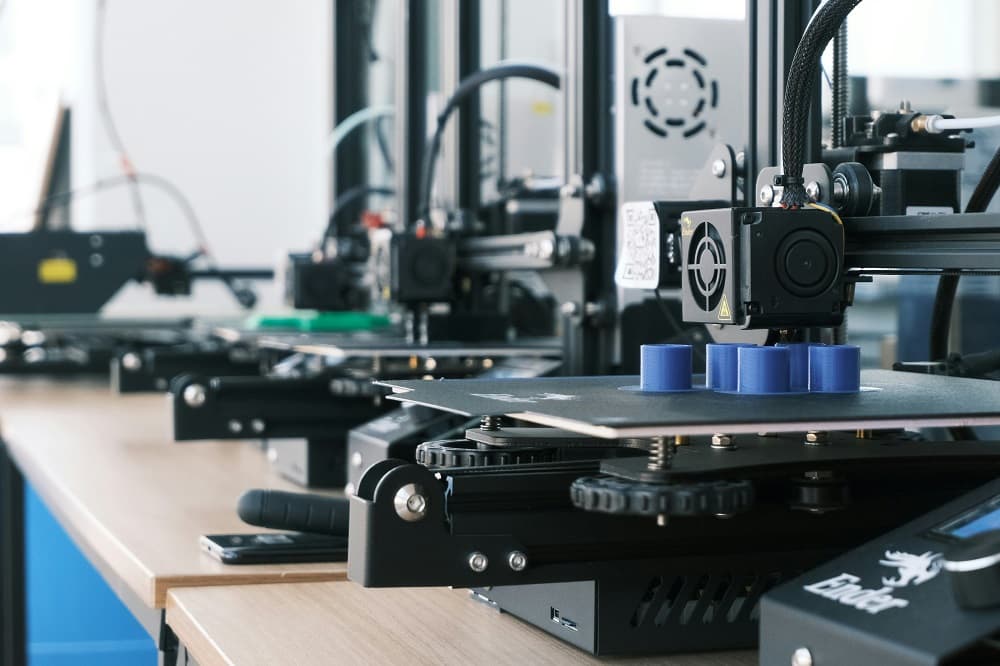
The factory floor is no longer a realm of whirring gears and grimy overalls. The landscape of machine manufacturing is changing dramatically, driven by a surge of cutting-edge technologies. From designing and selecting raw materials to manufacturing and quality control, many advancements are shaping every stage of the process.
In this article, we will delve into the exciting progressions shaping the process and making it faster, more efficient, and futuristic.
Design and Prototyping Innovations
According to Fortune Business Insights, rapid prototyping is used to examine the physical properties of different materials before mass production. This is why the global rapid prototyping market is expanding and was valued at $634.8 million in 2023.
It is anticipated to increase at a CAGR of 18.1% and will become $2827.3 million by 2032. In the realm of design and rapid prototyping, the borders between the digital and physical are muddling.
Advanced computer-aided design (CAD) software allows engineers to produce intricate 3D models with incredible detail and functionality. These models can be stress-tested virtually, saving time and materials.
Furthermore, advancements in 3D printing techniques like high-speed continuous liquid interface production (CLIP) are creating prototypes much faster than ever before. Even metal 3D printing is becoming more accessible, enabling the creation of fully functional, durable prototypes that closely resemble the final product.
These innovations drastically lessen the cost and duration associated with conventional prototyping methods. They also allow manufacturers to iterate on designs quickly and bring their creations to life faster.
Precision Machining Techniques
Precision machining is crucial for translating designs into reality. This technique utilizes computer numerical control (CNC) machines to accurately manipulate an array of cutting tools.
According to Grand View Research, the worldwide precision manufacturing machines market volume was $13.07 billion in 2022. It is predicted to rise at a CAGR of 6.8% during the forecast tenure, i.e., from 2023 to 2030. The defense and aerospace, capital goods and engineering, energy, and power, collectively forming the non-automotive segment, held 78% of the market share in 2022.
Gone are the days of manual adjustments and human error; CNC machines rely on pre-programmed instructions to achieve tolerances measured in microns. This translates to parts with unmatched precision and consistency, which is vital for complex machinery. Furthermore, advancements in multi-axis CNC machining allow for the construction of intricate designs in a single operation.
It also helps streamline the production process and minimizes the need for manual assembly. Precision machining is the bridge between the designer’s vision and the creation of high-performance, reliable machines.
Laser Processing: Revolutionizing Manufacturing Precision
According to Novanta Photonics, laser technology is taking manufacturing precision to a new level, revolutionizing manufacturing. This technique utilizes a highly focused beam of light to manipulate materials with unmatched accuracy and control.
Unlike traditional machining methods that rely on physical contact, laser processing creates clean cuts, welds, and surface modifications without warping or degrading the material. This minimal heat input allows the creation of complicated features on delicate materials that are impossible with conservative techniques.
Furthermore, laser processing solutions boast incredible speed and repeatability, making them ideal for high-volume production of complex parts. With its versatility and unparalleled precision, laser processing is rapidly becoming an indispensable tool for manufacturers seeking to create high-performance machines with exceptional quality.
Smart Manufacturing and IoT Integration
The future of machine manufacturing lies in smart factories. The key to unlocking this potential is the incorporation of the Internet of Things (IoT).
Manufacturers can create a network that gathers real-time data on machine performance or production line efficiency by equipping machines with sensors and internet connectivity. This data can then be analyzed using powerful software to identify areas for improvement, predict maintenance requirements, and optimize manufacturing processes in real time.
According to IoT Analytics, the number of IoT connections grew by 18% in 2022 globally from the previous year and became 14.3 billion active endpoints. In 2023, the number of active IoT endpoints grew by 16% and became 16.7 billion. The number of active connections is anticipated to become 29 billion by 2027.
This intelligent communication between machines and software allows for a more proactive approach to manufacturing, minimizing downtime and maximizing efficiency. It also helps pave the way for a truly intelligent and data-driven production environment.
Quality Assurance and Inspection Technologies
Traditional quality control methods are being eclipsed by the rise of sophisticated inspection technologies. Machine vision systems, furnished with high-resolution cameras and powerful image scrutiny software, can now autonomously inspect parts for even the most minute defects quickly.
These systems are not only faster and more consistent than human inspectors, but they can also be integrated directly into production lines. They can catch problems early on before defective parts are further integrated. Additionally, advancements in non-destructive testing (NDT) techniques, like ultrasonic and X-ray inspection, allow for a deeper look inside components, revealing hidden flaws.
By implementing these advanced quality assurance and inspection technologies, manufacturers can ensure the consistent production of high-quality machines, boosting customer satisfaction and brand reputation.
Environmental Sustainability in Manufacturing
The cutting-edge revolution in machine manufacturing isn’t solely focused on efficiency and precision. Environmental sustainability is also a key driver of innovation. Manufacturers are increasingly incorporating practices that minimize environmental impact. This can involve using recycled materials in machine components or employing energy-efficient processes during production.
Additive manufacturing techniques, like 3D printing, can also minimize material waste compared to traditional subtractive techniques. Additionally, advancements in clean energy sources allow factories to power their operations with renewable resources, reducing their environmental footprint.
By embracing these sustainable practices, manufacturers can create high-performing machines and contribute to a greener future.
Frequently Asked Questions
How does laser processing enhance manufacturing precision and efficiency?
Laser processing enhances manufacturing precision and efficiency in two main ways. It creates clean cuts and welds with minimal heat input, allowing for intricate features on delicate materials. It boasts incredible speed and repeatability, making it ideal for high-volume production.
What is the significance of automation in today’s machine manufacturing?
Automation is crucial in today’s machine manufacturing for two reasons. It increases precision and consistency by minimizing human error. It boosts efficiency by performing tasks faster and tirelessly, leading to higher production rates.
How do data analytics and IoT reshape manufacturing?
Data analytics and IoT reshape manufacturing by providing real-time data on machine performance and production lines. It also enables data-driven decision-making to optimize processes and predict maintenance needs. This results in smoother production and reduced downtime.
In conclusion, the face of machine manufacturing is rapidly evolving. From the initial design stages to the final inspection, cutting-edge technologies are transforming every step of the process. As these technologies progress, we can assume even greater levels of precision, efficiency, and innovation in the machines that shape our world.





















